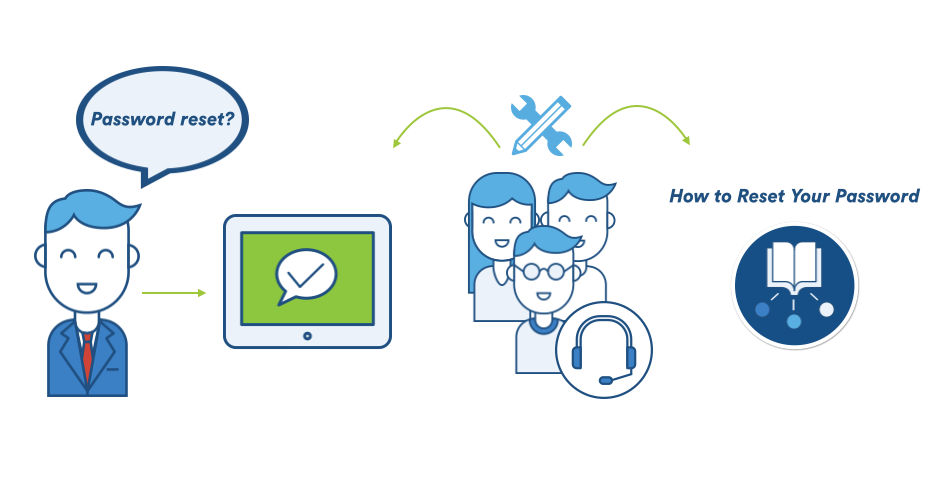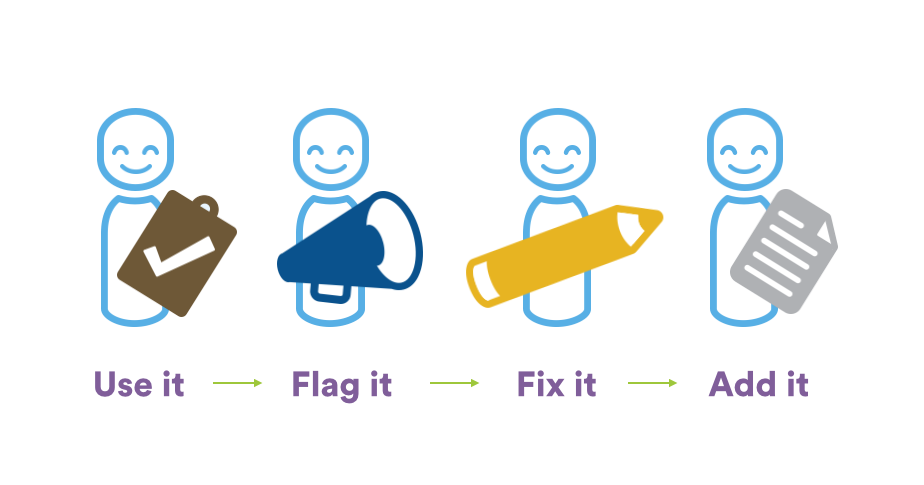Ask any service desk team and they’ll tell you they’re swamped with requests. But ask them about knowledge management, and you’ll find many service teams think of it as an afterthought.
Fighting fires is accepted as part of the job. So why isn’t knowledge a more highly regarded aspect of the arsenal?
In fact, knowledge lies at the heart of every service desk. It’s how agents respond to problems and learn about the systems they administer. But, there are bottlenecks to creating a kickass knowledge center: too many review cycles, not enough time, and content that’s divorced from the customer context. Knowledge-Centered Support, or KCS, addresses these pitfalls to enable better internal and external knowledge sharing. Having a knowledge-centered service desk allows teams to respond to issues quicker, resolve complex issues faster, provide consistent answers, build better resources for learning, and enables self-service.
What is KCS?
Knowledge-centered support is a methodology that focuses on knowledge as a key asset of the organization. KCS is not something to do in addition to solving issues, KCS becomes the way in which you resolve issues. KCS does not replace the knowledge and experience of your support agents—rather, it complements them. Organizations that have implemented KCS report dramatic improvements in operating costs, incident/request resolution, customer satisfaction, job satisfaction, and significant reduction in training times.

How does it work?
Knowledge-centered support follows a continuous loop of capturing, structuring, and reusing content.
Step 1: Capture Knowledge
Knowledge starts with the customer. When requests come in, articles are created as a by-product of the problem-solving process. This means that your team writes articles in the customer context, making information inherently relevant and easily searchable.

Step 2: Structure Knowledge
The best way to write an article from the customer’s perspective is to work from a template or form. This keeps things simple for service desk agents and promotes consistency in the knowledge base.
Step 3: Reuse Knowledge
When working on customer issues, agents should search through the knowledge base. They can then link incidents to relevant articles, making sure the team works from their collective knowledge.

Step 4: Improve Knowledge
The next step is improving content. When agents reuse articles in their problem-solving process, they’re reviewing them at the same time. Frequently used articles are constantly being seen and therefore remain current. This keeps your knowledge up-to-date and shares ownership across the entire team. Once an article is ready, it can be pushed to customers.

Step 5: Content Health
One way of improving the quality of your content is knowledge monitoring. Measure how effective each article is at solving problems and only put resources toward high-demand, cost-reducing knowledge.
There’s more to knowledge-centered support than just process. Cultural changes play a big part—applying KCS shifts your team from relying on individual experiences to working from collaborative knowledge. Collective wisdom enables more than just the service desk team, it provides resources for organizational learning and helps onboard new agents as they come. For more steps on evolving your knowledge-centered support, watch the entire presentation by ITSM expert John Custy.
Watch ITSM Expert John Custy’s Presentation on KCS
Want more knowledge management tips? Watch the webinar, Deflect Tickets with a Self-Service Knowledge Base.
Resources
- Knowledge-Centered Support: The Methodology That Really Works
- Consortium for Service Innovation
- KCS Practices Guide
- Case studies
- KCS-Verified program
- HDI
- KCS Foundation – standard, workshop and certification
- KCS Principles – standard, workshop and certification
- KCS Coach – workshop
